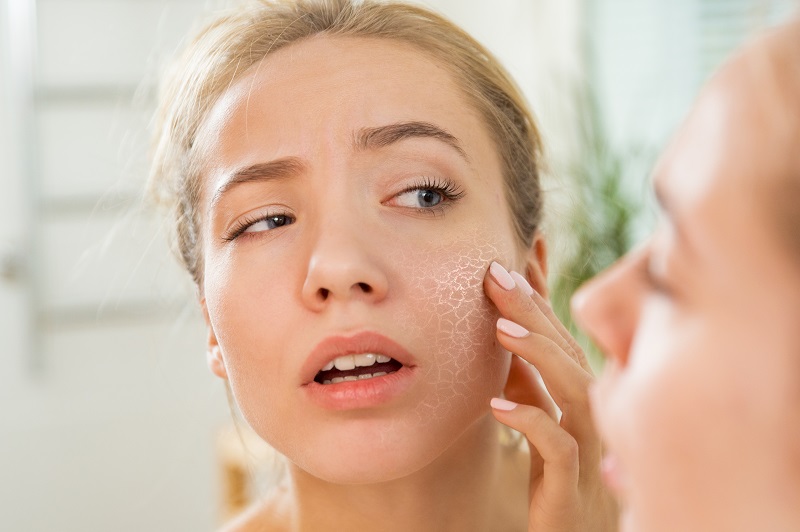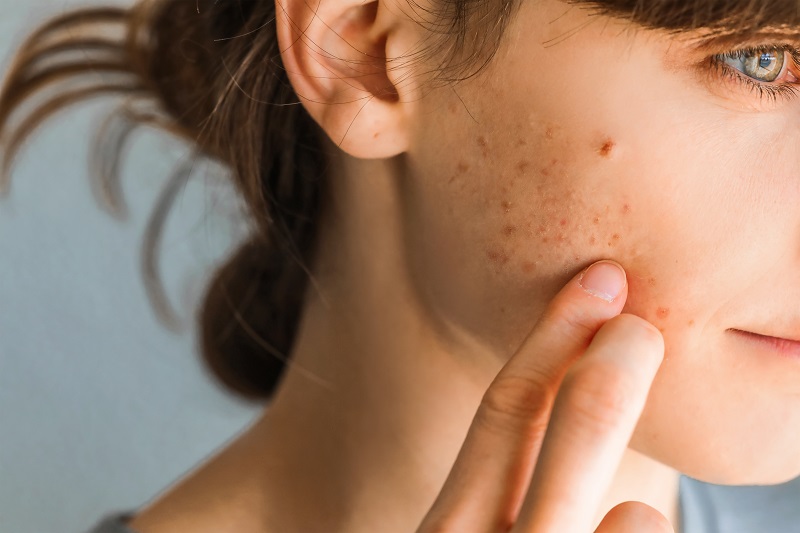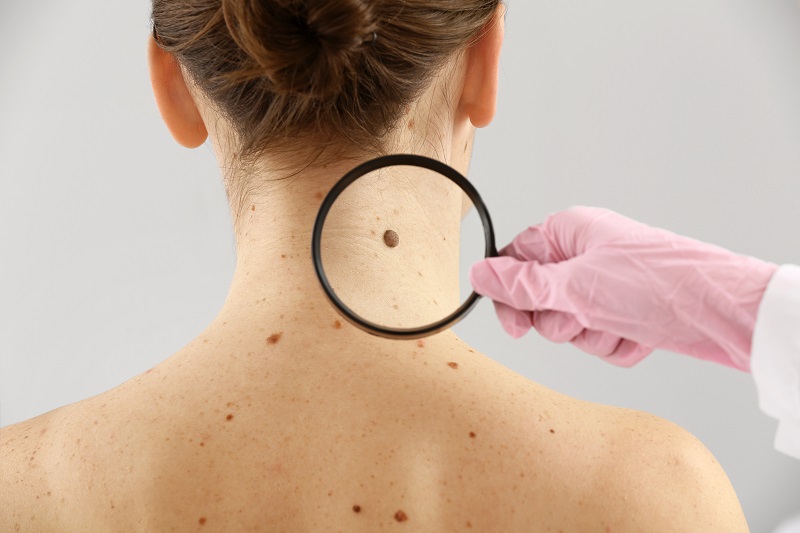Omega-3 fatty acids are essential nutrients, abundant in fatty fish (e.g., salmon and mackerel), seafood, walnuts, flax, hemp, and chia seeds. They are touted for their beneficial properties, especially those related to heart health.
Recent research suggests they may also improve various skin concerns when absorbed through diet and topical skincare products.
This article explains how omega-3 fatty acids work and lists their potential benefits.

Seven Omega-3 Benefits for the Skin
Most scientific studies on omega-3 fatty acids focus on their benefits for general health. Research on the nutrient’s positive effects on skin health is still emerging and shows promising results. They suggest omega-3 fats:
1. Reduce Inflammation
Inflammation is the body’s natural reaction to harmful agents and injury. However, chronic inflammation can damage healthy cells and organs, including the skin. Research suggests omega-3 fats have anti-inflammatory properties and may improve inflammatory skin diseases, including psoriasis and atopic dermatitis.
Note: Learn more about anti-inflammatory nutrition and treatments by reading our guide on How to Reduce Inflammation.
2. Protect Against UV Damage

Certain omega-3 fatty acid metabolites suppress the inflammatory response following UV exposure, preventing sunburn and swelling. Omega-3 fats also increase the production of ceramides which form the skin barrier, improving hydration and skin barrier function. A strengthened skin barrier helps prevent and reduce UV damage.
Note: Learn more about sunscreen products that offer the best protection against UV exposure.
3. Reduce Wrinkles and Hyperpigmentation
Skin aging is caused by several factors, including UV radiation, inflammation, and collagen loss. By reducing the damaging effects of UV radiation and lowering inflammation, omega-3 fats help diminish aging signs.
Omega-3 fats may also increase the production of collagen, the skin’s most abundant protein. More collagen results in improved skin elasticity and the reduced appearance of wrinkles, hyperpigmentation, and other skin aging sings.
Note: ALASTIN Restorative Neck Complex is a an innovative product with omega-3 fatty acids from flax seed, which successfully improves skin texture, wrinkles, and discoloration in the décolleté area.
4. Improve Dry and Itchy Skin

Inflammation and UV radiation can result in dry, scaly, and itchy skin. Anti-inflammatory and photoprotective properties of omega-3 fats help strengthen the skin barrier, increasing hydration, and have a soothing effect on irritated skin.
Note: If your skin feels tight, itchy and dehydrated, read our article on what causes dry skin, and how to treat dry skin.
5. Reduce Acne

Inflammation can increase sebum production, leading to clogged pores and the formation of pimples. Omega-3 fats have been shown to regulate the skin’s oil production. They also suppress inflammation throughout the body, including the endocrine system. This helps regulate potential acne-causing hormonal imbalances, especially changes in sex hormones and insulin-like growth factor.
Note: Learn what causes acne and how to improve the condition.
6. May Promote Skin Wound Healing
Research on the link between omega-3 fats and wound healing is inconclusive but suggests that omega-3 fatty acids have a positive effect on recovery after an injury.
Wound healing is a complex process involving three stages – inflammation, proliferation, and remodeling.
Though inflammation is the body’s natural response to injury, chronic inflammation can delay recovery, and omega-3 fats help prevent this by reducing inflammation. They also promote the proliferation of cells involved in the wound healing process, helping to repair damaged tissue. Finally, they promote the new collagen production, helping to build new tissue and skin.
7. May Help Reduce the Risk of Skin Cancer

UV exposure is the main cause of skin cancer. By strengthening the skin barrier and decreasing inflammation, omega-3 fats lower the damaging effects of UV radiation.
Research suggests that dietary omega-3 fats may suppress cancerous changes that occur after UV exposure, possibly reducing tumor growth and its ability to spread.
How Long Does It Take for Omega-3 to Work for Skin?
The time it takes to see the positive effects of using omega-3 fatty acids for the skin varies depending on factors such as:
- The form of omega-3 fats (food, supplements, skincare products)
- Amount/dosage
- Type and severity of the skin condition
- The person’s age
The results usually appear within six months.
Conclusion
Omega-3 fatty acids provide various skin benefits, including sunburn prevention, delayed skin aging, and reduced acne.
Add more omega-3 fats into your diet and use topical products with this ingredient to enjoy the nutrient’s many skin-enhancing qualities.


